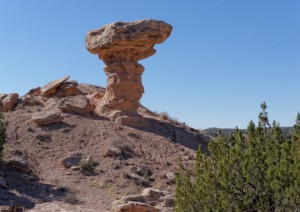I only recently discovered the MF stereo world thanks to Nik! the first I’d seen was at the 2012 NSA. Immediately after that I’ve had 7 foot surgeries and unable to use my TL 120 the way it was intended. Determined to participate though, and once things are healed I’ll be getting out and composing directly to film. I realize one goal of this folio is to preserve the art of direct analog film photography, so my new entries are a bit of sacrilege. Since I’m a scientist I like to experiment. I have a bunch of 35 mm stereo and digital stereo photos. One question I wanted to answer empirically was: what would it look like to transfer images from my archive to medium format.Michael K. Davis has excellent article on the philosophy of digital vs. film in the ISU Stereo Journal 4, Series 2 # 72. The TL 120 has exceptional resolving power and Provia 100 F is around 100 line pairs per mm (nominal case). This amounts to approximately 6000 lp in the MF, viewed with a 45 deg field, this exceeds human vision resolution by at least 2-fold. I have a Seiki 39 Quad HD display (early version) at 3840×2160. Filing the horizontal axis gives approximately “retinal” resolution. Of course even though the Sony is capturing at 4500×3200, there is the Bayer filter sensor and all it’s interpolation which effectively reduces resolution. But the screen is the bottleneck in the pixel pipeline. Color accuracy and gamut are the big issues of the Seiki screen. I constructed a color table using an IT8 target, and after a couple of iterations got it reasonably close. But only about 85% Adobe color space I’d estimate. There are better “4k” screens now. And some 16 k screens in the works (although likely we will see 8k for special apps, the color depth is likely only 10 bits per color).
The original images were taken raw with a Sony SLT 55 with prime 35 or 100 mm lenses, as cha-cha. I have a dual Sony SLT 55 setup but didn’t use it here. For each image I list the original taking details. The workflow thereafter was:
- process the image for aberration using DXO and parametric correction files, run through stereopair maker
- use custom color table and display image on Seiki screen. If you ever tried this you’ll see the “correct” image looks very low contrast and a bit washed out in order to photograph correctly.
- focus using a ground glass target in the film plane.
- take image on Provia 100F 120, TL 120 85 mm stock lenses F 16 1/2 sec (may be diffraction limited at this small F stop)
- develop by hand using Arista E6 and spool tank. Here minor changes in time and temperature can shift contrast and color.
The results look just acceptable to my picky eye, but could be greatly improved by adjusting color table parameters further. But the moral of the story for me is, even if they look “good” to a novice, the typical MF images of the best artists out there are an order of magnitude better. For example you might consider a typical Provia 100 image of a colorful scene has probably several billion distinct colors, most of which the human eye and brain can appreciate. The best 10 bit per color displays come close, but you’d need the right driver to make use of it, and a non-Bayer sensor (like a Foveon) for spatial color reolution.
I look forward to comparing to direct to film images of the same scenes, so I can lay this whole 4k thing firmly to rest and get back to real photography. Displays will improve with time. There are 8k displays in the works with 99.5 % SRGB gamuts, but they’re still around 20k. I learned a lot from this excercise about modulation transfer functions, color gamuts, blind image deconvolution, Bayer filter CCDs, sub pixel structure of displays, different liquid crystal displays. Too much to go into detail here. I might update this I the future with links to useful sites. And of course many of the quirks of my two TL 120s. It seems the prism focusing screen focus is at a different plane than the film emulsion, and that the apertures are actually smaller than ideal at small diameters F stop (16..22). But easily compensated for by jotting down notes to use during shooting.

You must be authenticated to view comments.